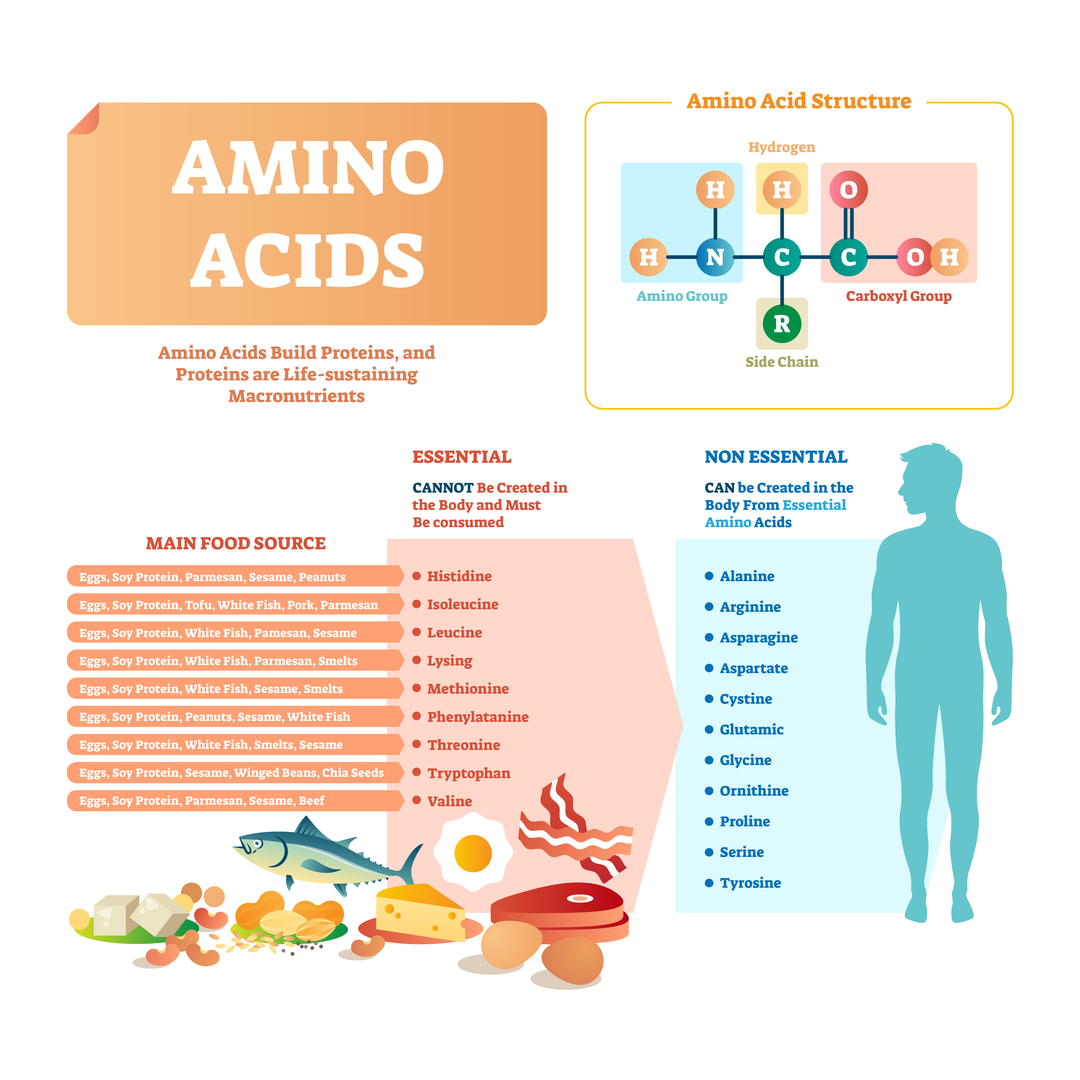Protein: The Essential Macronutrient
Did you know that protein is the only* essential macronutrient? However the amount we need remains controversial. Here we will not only explore the daily recommended protein intake, but also the optimal intake for metabolic function. And these are very different numbers and recommendations.
We often talk about the dietary recommended protein intake, but the truth is we really don’t require protein, we require the 20 amino acids contained in protein. Protein is kind of like a vitamin pill, we don’t need the pill, we need the 12 specific vitamins that are in the pill. Likewise, protein is the food source of amino acids. We consume protein in food; the protein is digested in our intestines; and the amino acids are then absorbed into our body.

The Amazing Role of Amino Acids
The 20 amino acids we get from protein have numerous metabolic roles within the body. The most fundamental and basic role is providing the building blocks to make new proteins within our bodies. Your skin, bones, liver, hair, and muscles are all made up of different proteins and each protein has a different combination of the 20 amino acids.
For example, insulin is a small protein with only 51 amino acids while myosin is a muscle protein made up of almost 2,000 amino acids. The largest protein in the human body is also a muscle protein called titin containing nearly 27,000 amino acids.
The 9 Essential Amino Acids
Among the 20 amino acids in food, we have an absolute daily requirement for 9 of these amino acids. These 9 amino acids are defined as essential or indispensable because the body cannot make them.
So, when we say we have a dietary requirement for protein, that’s not true. We actually have dietary requirements for each of the 9 essential amino acids. Again, like a vitamin pill, we don’t require a one-a-day pill, we require specific amounts of vitamin C, vitamin D, niacin, B6, etc.
Because of the requirements for specific amino acids, all proteins are not equal. All proteins do not contain the same amounts of each of the essential amino acids and that means all proteins are not of equal quality. More about this concept of protein quality later.

Amino Acids & Metabolism
The metabolic roles of dietary protein are actually derived from the metabolic roles of individual amino acids. As I said above, the first requirement for each amino acid is for protein synthesis … the role as a building block for making new proteins in the body.
This is reflected in the minimum requirement for protein defined as the RDA which is 0.8 grams of protein per kilogram of body weight (~ 0.36 grams/pound). But each amino acid has one or more additional metabolic roles, and the success of these roles is dependent on consuming more protein than the minimum RDA.
The Optimal Amount of Protein
Some examples of these many roles include conversion of the amino acid Lysine into carnitine which is essential to transport fatty acids into the mitochondria to make ATP; use of the amino acid Arginine to produce nitric oxide for regulation of blood pressure; use of Cysteine for production of glutathione a molecule that reduces oxidative stress and inflammation; use of Tryptophan for production of the neurotransmitter serotonin that regulates mood and sleep; use of Arginine and Methionine for production of creatine that regulates muscle energy, size, and strength; and Leucine for regulation of muscle protein synthesis (MPS).
The dietary protein requirement necessary to optimize the metabolic roles associated with each of these amino acids is approximately 1.6 grams/kilogram body weight (~ 0.72 grams/pound) or twice the minimum RDA.
Leucine provides a great example to understand the difference between the minimum requirement for building new proteins versus the optimum need for metabolism. The minimum RDA for leucine is set at 2.5 grams PER DAY, but we now know that optimizing MPS requires that EACH MEAL contains approximately 3.0 grams of leucine.
Hence, the optimum need for leucine is nearly three-times the minimum RDA. We use this unique knowledge about leucine and essential amino acids in creating our concept for protein-centric metabolism. More about leucine in our next issue.
*We do have a requirement for small amounts of fatty acids (i.e. omega-3 fish oil) but carbohydrates and fats are, for the most part, just calories used for fuel and to some extent, interchangeable.

